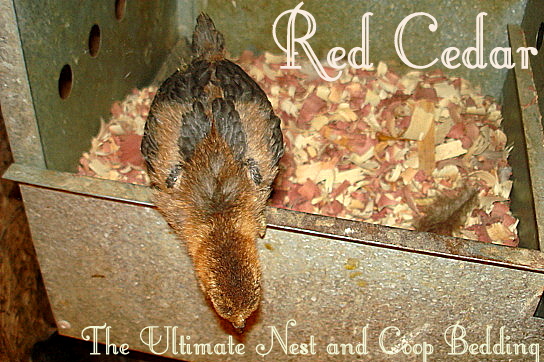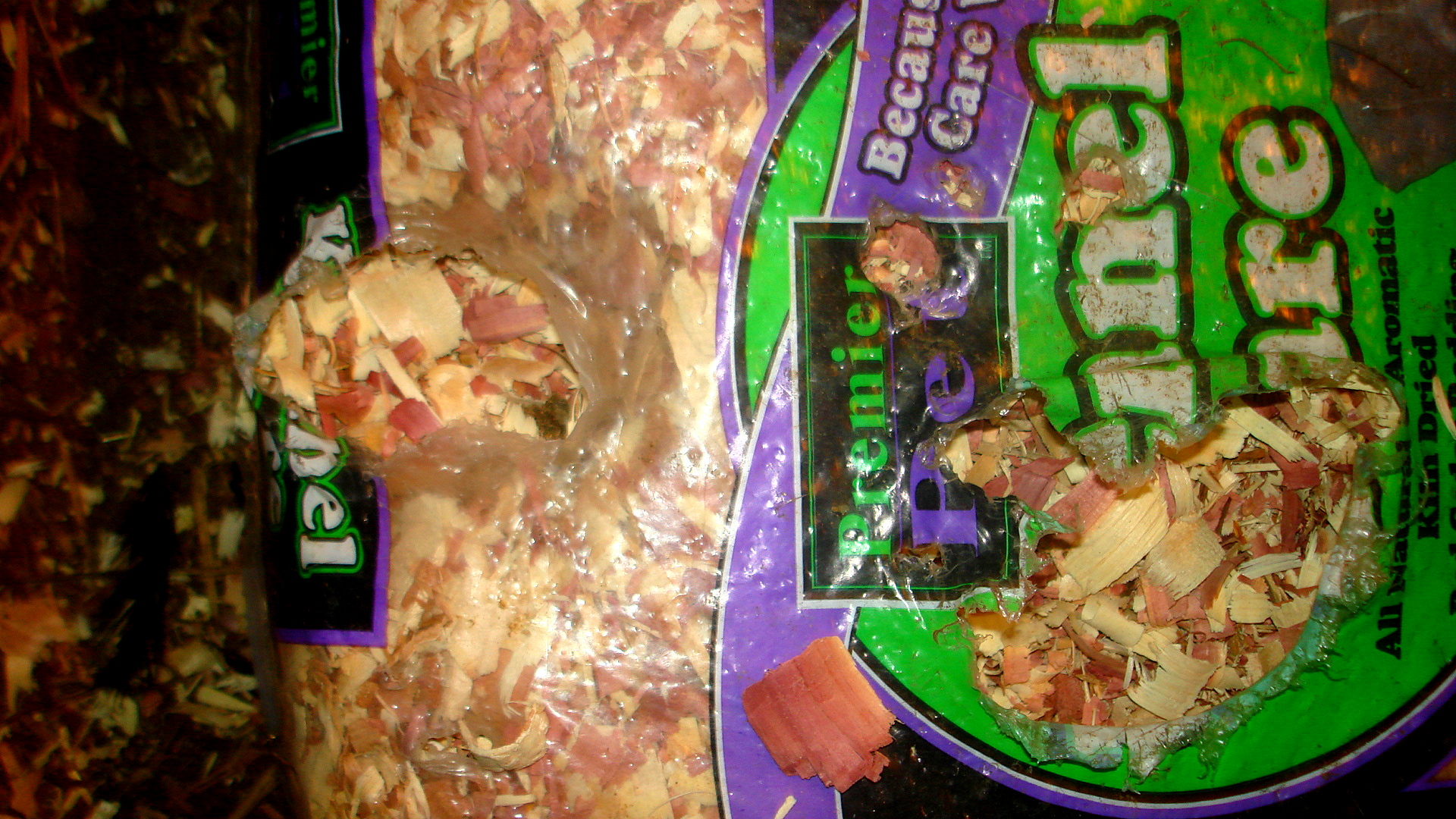 |
|
Red Cedar - The Ultimate Nest and Coop Bedding  Using Red Cedar for poultry litter is a classic example of bad, old information just being passed from one person to the next with no real questions asked or research done. The question of red cedar’s toxicity to birds came up early on when I started keeping poultry. I remember the lively discussion about it on the guinea fowl message board I participated in at that time. I was so busy learning about poultry keeping, however, I went along with the "toxic" label, but tucked it into my back pocket to think about later because the idea still intrigued me. A few years ago, I wanted to revisit why this aromatic wood was deemed "toxic" to birds. In the meantime I had hit upon the idea of using aromatic herbs and indeed had read that some wild birds were known to build their nests with some aromatic native herbs. Although I had many native herbs around to pick that were quite aromatic, the potency was largely lost once it dried up, and I had to remember to refresh frequently. Sitting on top of the straw meant inconsistent coverage. Red Cedar chips would take care of those two things. The wood tissue could not only be the bedding, but it had enough concentration of oils to last forever. Red Cedar chips seemed like they would be the perfect answer. From one of our herbal elders, Dr. William Cook, I read his case study on Red Cedar, Juniperus virginiana. Red Cedar essential oil had been used historically, both internally and externally often compared to others in the juniper family. Red Cedar was largely used topically and in skin washes. It is well documented that aromatic essential oils from herbs are a natural bug repellent. Strong aromas are too much for small bugs and so they go elsewhere when they encounter them. So where does the "toxicity" label comes from? Seems there was only a single source of documentation online on a website called "The Rat Report". It is a site about keeping rats as pets, so this write-up about cedar was geared for rodents, not birds. But, it stated that, "Pine and cedar toxins also affect humans and other animals. People who work in cedar and pine sawmills have a much higher incidence of asthma compared to workers in other dusty environments or those without any dust exposure (3, 4). Another study found that chickens kept on softwood shavings had a higher incidence of respiratory infections (5). I wanted to read the source myself for the details. Funny enough, it was not found anywhere online. It took a few months, but finally one of my FB admins was able to pull it from a university who had it on microfiche! So, what that told me was that the many people and sites who quoted this source to promote "TOXIC CEDAR" articles, trusted the writer and did not read the source themselves. This is bad for them, because the writer made it seem like the chicken study included cedar (either by design or by bad writing) and it, in fact, did not. If you read the study, it compared PINE shavings with those from lumber mills and those that were kiln dried soft pine. By the way, the research was favorable to the kiln dried soft pine. So this quote, has been totally skewed from the beginning, and everyone in the world was using it as reference to report that cedar was toxic to chickens. With this information in hand, I thought, why not try it? An herbalist elder reported historical uses for red cedar and there were no specific studies with poultry testing Red Cedar as litter that were negative that I could find. So I started an experiment in 2013, reporting back to the members of my group page. Some members joined along. After a year of using kiln dried Red Cedar in the coops and pens, around adults and chicks there were no discernible problems that I could see. A plus is it is an excellent bug repellent, with much better staying power than dried herbs. I did not notice ANY respiratory issues in 2014 which was one of the worst winters I had ever experienced in my lifetime with the polar vortexes. The most fascinating thing I have learned while using Red Cedar chips for my flock is that the birds would rip open holes in the bag so they could chew on it. They also chew on it once I spread it on the ground. They have consistently done this since I started this experiment. They did not do the same with pine chips. Red Cedar chips proved to be just the answer for the application I wanted. I am very happy with the results.  To summarize, here are the benefits I have found using red cedar as an addition to litter and in nesting boxes and coop bedding: Source: |